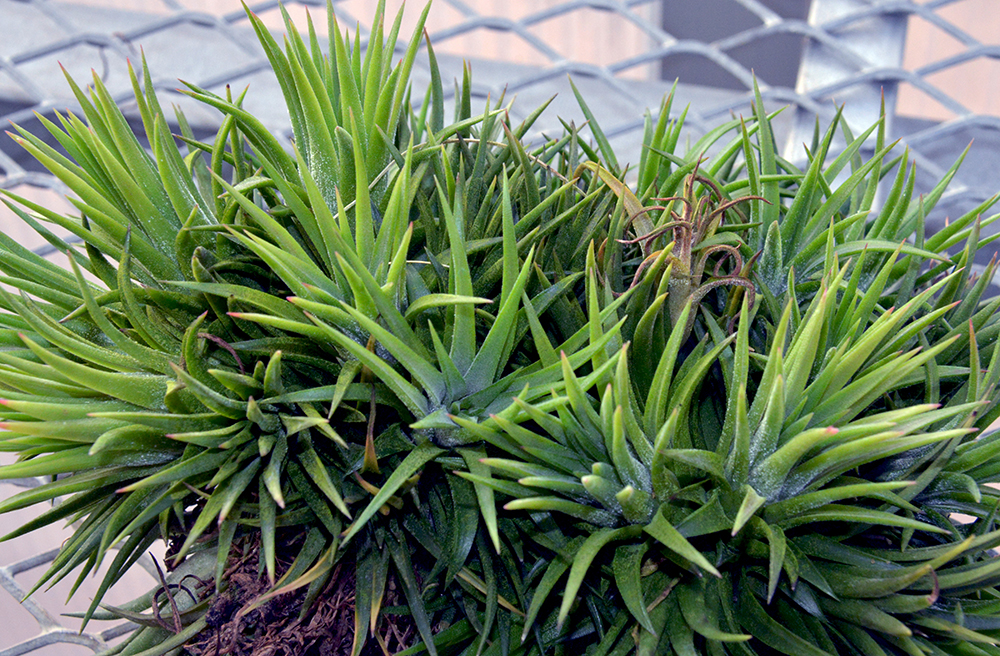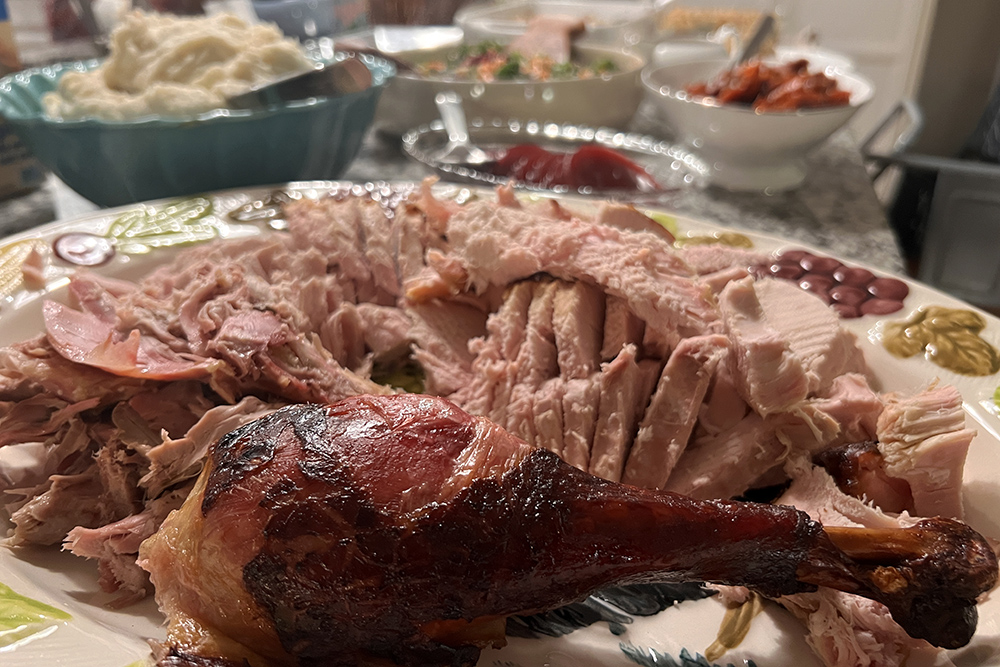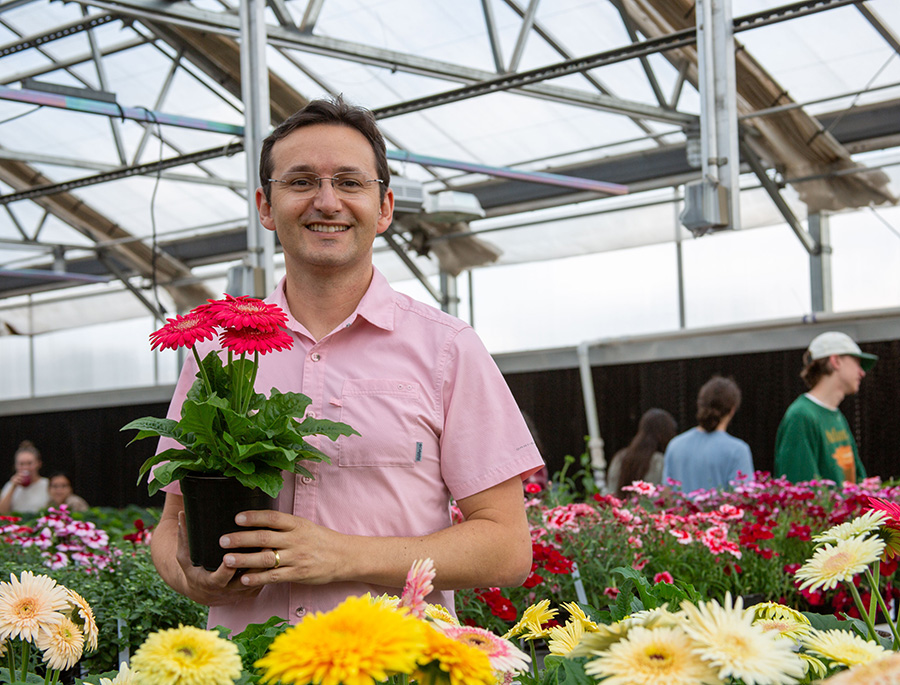Around the holiday season, many people feel gift-block. Maybe it’s the pressure of having to find gifts that loved ones will appreciate or having to find a gift last minute. Whatever the case may be, a houseplant makes a fantastic gift.
Houseplants are versatile. They can brighten up any space and add pops of life and color. Look through any trendy home design website, and you’ll notice photos that include houseplants. The big leaves of the tropical banana plant, fiddle leaf fig or split leaf philodendron are on-trend, making houseplants a great gift for your hip college-aged niece as well as that hard-to-buy-for uncle or co-worker.
Houseplants are not only visually appealing, they have lots of health benefits too. They purify indoor air and provide mood-boosting benefits during the harsh winter months when people spend more time indoors.
The key to picking the right houseplant to give as a gift is to think about maintenance, said Paul Thomas, UGA Extension horticulture specialist.
Giving a high-maintenance houseplant to a busy loved is like giving someone a Rolls-Royce with a car note attached. You don’t want your gift plant to become a burden by the time March rolls around.
The good news is that there are lots of beautiful houseplants that are easy to care for and that your recipient will love.
Before you go shopping, here are some helpful tips to follow from University of Georgia Cooperative Extension:
- Follow the light. Do you know the lighting conditions of the plant’s new home? Low light? Bright, filtered light? Generally, houseplants should be kept out of direct, bright sunlight, which can burn the leaves.
- Know the plant, know your person. Will the recipient remember to water the plant every few days or so? Or will giving a houseplant that can survive weeks without attention be a better choice for them?
- Space invaders. What kind of space does the receiver have? Do they have the open space necessary for a bigger plant? Perhaps a small plant that can sit on a desk or windowsill would be a better choice. What style is their home or office, and which pot would match their style and space?
- The right container will help a lot. It’s very important that the houseplant’s pot has a drainage hole. There are lots of pretty containers that don’t have drainage holes, so be sure to check. Not allowing the water to drain from the pot creates a perfect environment for root rot and diseases. If you really want to use a container without holes, you can “stage” a plant by placing its plastic pot home inside of a larger pot.
- Give the gift of information. A great way to give your gift even more personality is to include a care card, which you can handwrite and decorate or simply print out. Include the plant’s name and all of the instructions on water and light requirements.
Now that you know your parameters, here are some low maintenance indoor plants that Thomas recommends,
Snake Plant, Sansevieria trifasciata
Perhaps the lowest maintenance plant of all, this plant can be found in many airports, and only needs to be watered once or twice a month. The long, straight leaves give a sharp architectural look. The plant likes lower light conditions and will burn in the sun.
Pothos, Epipremnum aureum
Pothos is perfect in a hanging basket or draping down a bookcase or tabletop. This plant prefers to stay on the drier side, so be sure to check the soil before you water. They also like indirect light.
Jade plant, Crassula ovata
It’s a common misconception that succulents are an “easy” plant because they “don’t need watering.” They can be finicky with watering and lighting. Jade, however, is a relatively low maintenance plant. It likes to be watered a little bit more than other succulents, but can tolerate being dry. If the leaves are soft, that means it’s time for water. This is a good plant for a sunny windowsill.
Dracaena, Dracaena fragrans
This plant has a palm-tree-like look and comes in a variety of shapes. It can grow to several feet tall and likes indirect light and a thorough watering when the soil becomes dry.
Spider Plant, Chlorophytum comosum
Also called an airplane plant, spider plants are great for hanging baskets or decorative pots. They produce pups which hang down from the plant and can be propagated by placing the plantlet roots-down into a new pot. This plant likes indirect light and should be watered when the soil is completely dry.
Air Plant Tillandsia
Air plants have no roots and absorb their nutrients and water through their leaves. Because of this, they don’t need any soil. They do need to be misted outside of their container or soaked for 30 minutes a week. Keep air plants in bright, indirect light. If there’s a window in the bathroom, they’d love the humidity. You can choose any container you want. A good place to find unique and inexpensive containers is at an area thrift store.
For more information on how to grow houseplants, visit UGA Extension Bulletin 1318 at extension.uga.edu/publications/detail.html?number=B1318.




